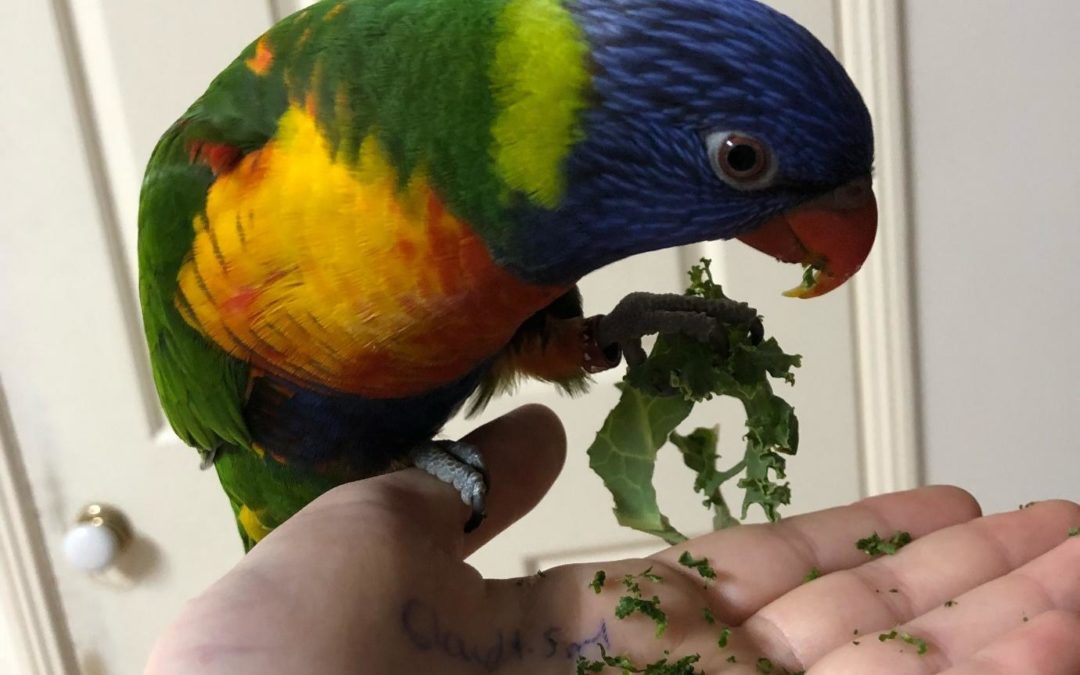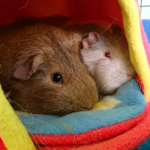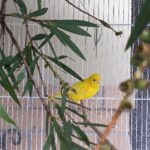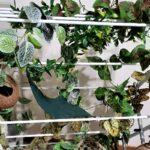Birds in the wild have evolved to eat a large variety of natural foods, which vary seasonally and regionally. Unfortunately, it is not possible for us to replicate the natural diet for our parrots in captivity. A well-nourished bird will live longer, be more resistant to disease and will generally be a happier member of the family. Seed alone is NOT a balanced diet.

Seed alone is NOT a balanced diet
Seed on its own is primarily either carbohydrates (e.g. millet) and/or fat (e.g. sunflower seed) and lacks a number of vitamins and minerals, as well as protein. Although the nutritional deficits can be balanced to a certain extent by adding other foods to the diet (such as pulses, vegetables and some fruits), birds tend to select only certain items, leading to malnourishment.
Pelleted diets are a better alternative to seed-based diets, as the bird is unable to preferentially select specific items, such as a favourite type of seed. Pellets are also more nutritionally complete, with each pellet containing all essential vitamins, minerals and proteins. There are many different brands of pellets available, the brand we recommend is Zupreem. There are several different types of Zupreem, with similar nutritional value.

For most parrots, we recommend that pellets be 80% of the total diet, with the remainder being vegetables, fruits and a small amount of nuts and seeds. Cockatiels and budgies should be fed no more than 50% pelleted diet.
Converting Your Bird to Pellets
Birds can sometimes be hesitant to try new things. The simplest method of introducing a bird to a pelleted diet is to place a container of pellets in the cage next to a favourite perch, or near the seed container. You may also wish to sprinkle some pellets over the seed. Vegetables and a small amount of fruit can be placed in the cage as well. Over time you should notice that more pellets are being consumed and less seed, and the amount of seed provided can gradually be reduced.
During the conversion process it is important to be mindful of how much your bird is eating in order to avoid excessive weight loss or other complications.
NEVER STARVE YOUR BIRD TO MAKE IT EAT PELLETS. THIS CAN RESULT IN SERIOUS COMPLICATIONS.
There are several parameters that need to be observed to aid in monitoring the conversion process:
- Weight
- Droppings
- Amount eaten
If any weakness, illness, or abnormal behaviour is observed during the conversion process, immediately replace the normal diet before phoning us for advice.
When to Change the Diet
NEVER change the diet of a thin or sick bird – the physiologic stress of diet changing may be more than they can tolerate. Feed thin or sick birds their usual diet (even if poorly balanced) until recovered, and then look at changing the diet to a better quality one.
The amount of time that a bird takes to convert from seed to pellets varies, and should not be rushed. It may take up to 4 to 6 weeks for a bird to fully convert to a new diet, so ensure that you have the time available for monitoring the bird for that duration.
For most parrots, we recommend that pellets be 80% of the total diet, with the remainder being vegetables, fruits and a small amount of nuts and seeds. Cockatiels and budgies should be fed no more than 50% pelleted diet.
Generally the darker the vegetable, the more nutritious it is. Recommended vegetables include corn, capsicum, zucchini, broccoli, squash, tomatoes, sweet potato, pumpkin, carrot, beans, peas, and other pulses. Vegetables should make up approximately 10-15% of the parrot diet. AVOID celery stalks, iceberg lettuce, and excessively watery fruits (these are not toxic, but are too dilute to be truly nutritious).
Recommended fruits include kiwi, strawberries, blueberries, grapes, small amounts of apple, melons and stone fruits (but remove the stones first). Fruits should make up no more than 5% of the diet.

As for chickens, their diet should consist of formulated chicken pellets, a variety of vegetables, some table scraps and protein from insects. Grit should also be offered.
Poultry
Nutrition is one of the most important facets of poultry ownership. Some foods are toxic to chickens and others, if fed in excess, can be bad for a chicken’s health. By providing your chickens with a balanced, nutritious diet, and by practicing good sanitation and hygiene, combined with preventative veterinary care, you will be doing the best job you can to ensure that your chickens will live a long, healthy life.
Some modern hens can produce an egg every 25 hours which puts quite a lot of nutritional strain on a bird. A large amount of calcium and protein is required to develop each egg and if a hen is not receiving an adequate amount of each it can lead to laying issues. It is therefore very important to feed a good quality formulated chicken pellet as the base of the diet as it will contain the right balance of vitamins and minerals needed for egg producing hens.
Commercial pellets should be made available at all times. Ensure that the food stays dry and fresh. Keep the pellets under cover or in a feeding container that provides shelter from rain. If the pellets get wet it is important to discard and replace it as wet foods are a breeding ground for bacteria.
Vegetables can be provided daily. A wide variety of greens may be offered, including silverbeet, broccoli, capsicum, celery, bok choy, carrot, chilli, kale, zucchini, sprouts and various herbs such as parsley, basil and coriander. Try to avoid feeding vegetables with little nutritional value such as iceberg lettuce and cucumber. Fruits can also form part of the diet but limit the chicken’s intake and only provide these as treats. Apple, banana, grapes, mango, pear, papaya and watermelon are some of the many fruits that can be fed.
Seeds, mixed grains and corn are good treats but should not form the bulk of the diet. Commercial grain mixes contain a large amount of wheat and cracked corn which are high in fat and very low in calcium and protein.
Table scraps can form part of a balanced diet but should not make up the bulk of a chicken’s intake. Since scraps will vary in nutritional value from day to day it is important to provide it only in moderation. Limit the amount of carbohydrates such as pastas and potatoes being fed to the chicken as well. Chickens can consume dairy products and may be offered a small amount of yoghurt and cheese, as well as some meat. Scraps can be scattered around to encourage hens to forage and exercise.
Chickens that are allowed to free-range will automatically start to supplement their diets by finding and eating insects, grasses, seeds and leaves. This in turn will provide them with a better nutritionally balanced diet which will produce healthier chickens and higher quality eggs.
Grit and fresh, clean drinking water should be provided at all times. Water dishes should be cleaned with detergent, rinsed well and then refilled with fresh water each day.
Never feed avocado, uncooked beans or potatoes, chocolate, onion, garlic and rhubarb, as these are toxic to birds.




